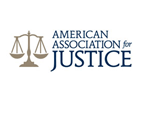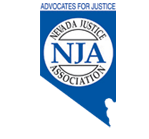Many ambitious Americans accept summer employment with lawn care service providers. Although profitable, the positions often put people in contact with equipment that can cause grave injuries. Chainsaws are prime examples. The Centers for Disease Control and Prevention keeps track of annual chainsaw injuries and the numbers are quite staggering.
They indicate that more than 30,000 people hurt themselves or other people with one each year. The United States Department of Labor takes their statistics further by breaking them down into personal injury categories. Their historical records show that the hands and arms are the top two areas to sustain damage in a chainsaw related accident. They are followed in priority by the legs, head, feet and upper body but why?
A chainsaw looks like a fairly easy piece of equipment to use but appearances are deceptive. They are small, powerful and vibrate continually. Plus, the chain has a tendency to jerk erratically or come off during use. As such, it can literally severe a major artery, limb or joint at a moment’s notice.
That said, it is widely accepted that kickbacks, dislodged and broken chains are among the chief causes of personal injuries. However, that doesn’t leave operator error and environmental factors off of the table as they tend to contribute to dangerous situations too. For example, a lawn care worker may try to operate a chainsaw with wet hands or slip on damp grass while the machine is in operation. Either scenario could result in the chainsaw kicking or falling back against the worker’s body.
Chainsaw manufacturers know this and in response, have added a number of safety features. The list of safety features includes, but is not restricted to anti-vibration handles, pressure sensitive throttles, chain catchers, kill switches and hand guards. Unfortunately, like other safety features on potentially deadly lawn equipment, they are not fail safe. So, lawn care workers who let their guard down because of the safety features’ presence often end up on a company’s injured list.
Furthermore, chainsaw operators and other lawn care employees who will be laboring in the same space also have a duty to wear personal protection. The personal protection equipment assigned to lawn care workers may be no match for chainsaws but they do help cut down on minor injuries. Let’s take no-slip work gloves and reinforced, steel-toed work boots as examples. They may prevent some vibration related injuries to the hands and broken chain injuries to the feet.
Keeping all of this in mind, people who sustain chainsaw injuries through no fault of their own should consider seeking restitution from the negligent parties involved in the accident. Examples of people who may be liable for damages are chainsaw or safety equipment manufacturers, property owners, lawn care managers and fellow employees who failed to do their due diligence.
To learn more about chainsaw accidents and what rights the injured may have in such situations, please contact us. We’ll go over the facts of the chainsaw accident and offer our opinion on how victims or their families should proceed.

 call:
call: 







